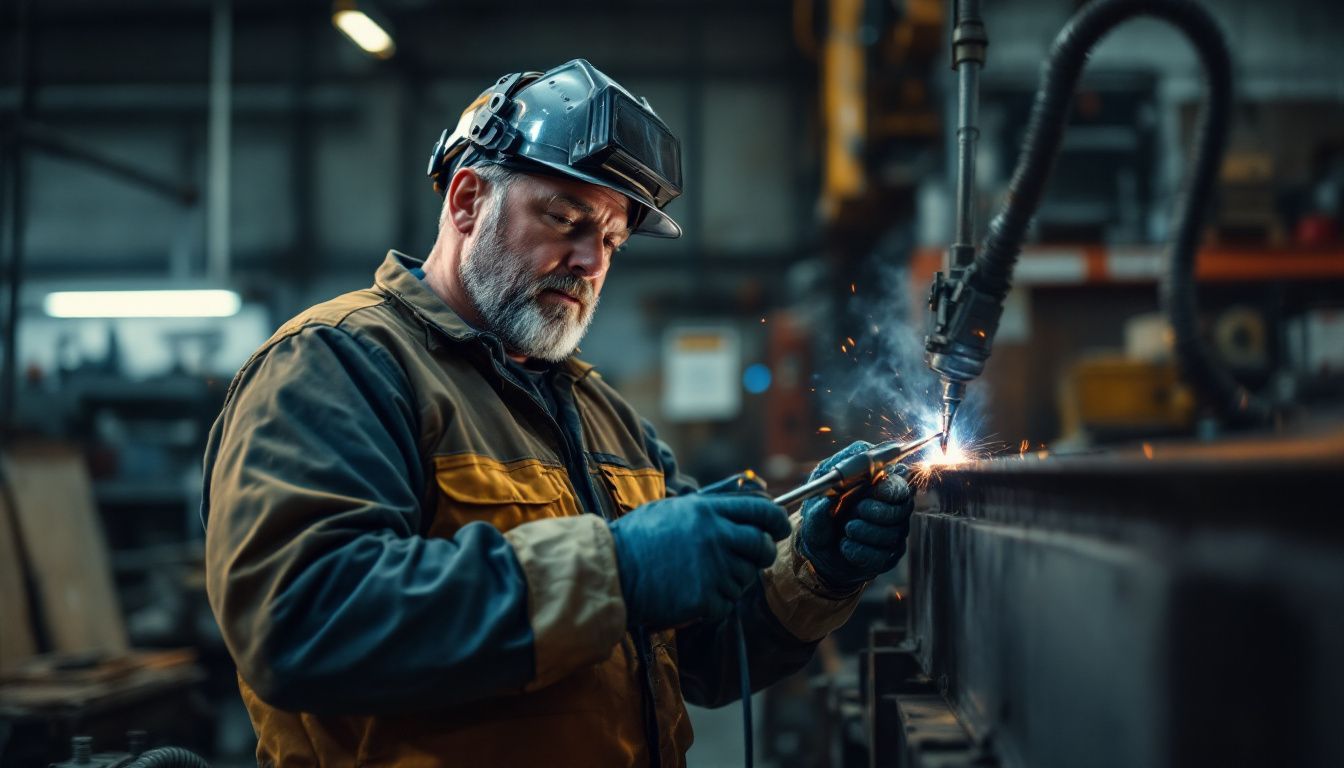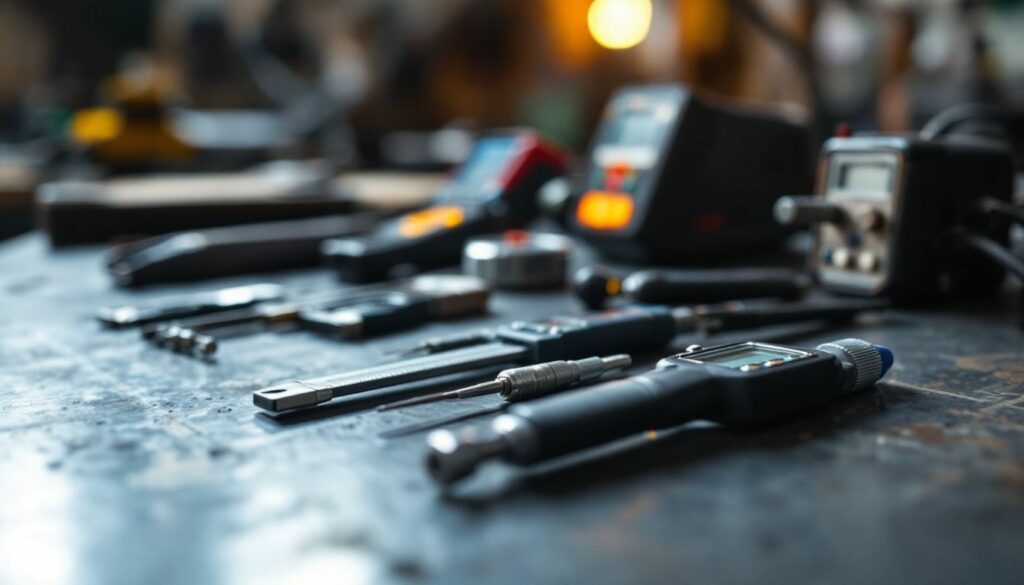Welding quality issues can lead to costly repairs and safety hazards. Welding inspection ensures every joint meets the highest standards. This guide covers essential tools and proven techniques for effective weld inspection.
Enhance your quality assurance processes today.
Key Takeaways
- Ensure Strong and Safe Welds: Welding inspection prevents costly repairs and safety hazards by making sure all joints are strong and secure.
- Certified Inspectors by AWS: Certified Welding Inspectors (CWI) accredited by the American Welding Society (AWS) ensure welds meet industry standards. They must score above 72% on exams.
- Essential Inspection Tools: Key tools include borescopes, radiograph machines, drones, magnetic particle testers, and advanced inspection software to identify weld defects.
- Inspection Methods: Use Non-Destructive Testing (NDT) and Destructive Testing (DT) to find issues like burn-through, corrosion, and porosity without damaging the weld.
- Phoenix Inspection Services: In Phoenix, AWS offers CWI exams through Prometric at over 450 centers. Local inspectors use tools like ultrasonic testers and X-ray machines to ensure high-quality welds.
What is Welding Inspection?

Welding inspection ensures every weld meets quality and safety standards. Inspectors use welding inspection tools to check strength and integrity. They examine materials and equipment before welding starts.
During welding, inspectors monitor techniques to prevent defects. After welding, they perform detailed examinations to identify any issues.
Certified welding inspectors, often accredited by the American Welding Society (AWS), play a crucial role. Their expertise ensures compliance with industry regulations. Reliable weld inspections protect structures and keep everyone safe.
Proper welding inspection is vital for maintaining the integrity and safety of any construction project.
Essential Tools for Weld Inspection
After understanding what welding inspection involves, it’s essential to know the tools that ensure high-quality results. These tools help weld inspectors maintain safety and reliability in every weld.
- Borescope: This tool allows inspectors to see inside pipes and confined spaces. It helps identify hidden defects without damaging the weld.
- Bridge Cam: A bridge cam provides a stable platform for inspecting large structures. It captures detailed images of welds, making it easier to spot issues.
- Personal Protective Equipment (PPE): Safety is crucial. PPE includes helmets, gloves, and protective clothing to protect welders and inspectors from hazards.
- Radiograph Machine: This equipment uses X-rays to view the internal structure of a weld. It detects hidden flaws like cracks or voids, ensuring the weld meets quality standards.
- Drones: For hard-to-reach areas, drones are invaluable. They can inspect high or inaccessible welds quickly and safely, saving time and reducing risks.
- Magnetic Particle Testing Tools: These tools help find surface and near-surface defects in ferromagnetic materials. They use magnetic fields to reveal discontinuities.
- Liquid Penetrant Testing Kits: Penetrant testing is used to detect surface-breaking defects. The liquid penetrant seeps into cracks and is made visible under UV light.
- Ultrasonic Testing Devices: These devices use sound waves to detect internal flaws in welds. They provide precise information about the weld’s integrity.
- Weld Inspection Cameras: High-resolution cameras capture clear images of the weld area. They help in documenting and analyzing weld quality.
- Inspection Software: Advanced software assists in analyzing inspection data. It ensures that all welds comply with industry standards and specifications.
Using these essential tools, weld inspectors can ensure every weld is strong and safe. Quality assurance tools are key to preventing defects and maintaining high standards in metal fabrication.
Key Techniques for Quality Assurance
Quality assurance in welding relies on three main techniques: Pre-Weld, During-Weld, and After-Weld inspections. Before welding starts, technicians review blueprints to ensure specifications are met, verify materials, and check tool calibration.
During welding, they monitor the welder’s technique and inspect each weld pass to maintain quality. After welding, visual inspections identify any surface defects, while strength tests ensure the weld meets required standards.
Certified technicians play a crucial role, having passed rigorous CWI exams with scores above 72%. These steps help identify imperfections early and ensure the integrity of the welding joint.
Using these techniques ensures weld quality and safety. Adhering to technical standards prevents common defects like burn-through and corrosion. Regular inspections also help control costs by catching issues quickly and accurately.
By following a series of quality control measures, companies can maintain high standards in their welding procedures and deliver reliable results every time.
Types of Weld Inspections
Different types of weld inspections ensure strong and safe joints. These methods can find issues like cracks or other common welding defects.
Non-Destructive Testing (NDT)
Non-Destructive Testing (NDT) examines welds without causing harm. Methods include visual inspection, liquid penetrant, magnetic particle, radiographic, and ultrasonic testing. These techniques help identify discontinuities like cracks or inclusions in fillet welds and butt welding joints.
Radiographic testing uses X-rays to see inside the weld, while ultrasonic testing sends sound waves to detect internal flaws. Liquid penetrant reveals surface defects by highlighting discontinuities with dye.
Magnetic particle testing attracts particles to cracks in ferrous metals, making them visible.
NDT ensures the quality of welds without compromising their integrity, safeguarding both performance and safety.
Certified Welding Inspectors (CWI) use these methods to ensure weld quality meets specifications. The American Welding Society (AWS) administers CWI exams through Prometric, available at over 450 centers worldwide.
NDT is cost-effective and essential for industries like aerospace and fluid conveyance pipes. By using NDT, companies ensure safety issues are minimized and weld quality is maintained to high standards.
Destructive Testing (DT)
Destructive Testing (DT) checks weld strength by breaking samples. Key methods include macro etch, transverse tension, and guided bend. These tests reveal discontinuities and assess the quality of the weld.
Macro etch examines the weld’s internal structure, while transverse tension measures its ability to withstand forces. Guided bend tests the ductility of welded joints by bending them until failure.
DT ensures weld quality assurance by identifying defects that affect the integrity and penetration of the weld. Qualification tests, such as the CWI Part B Practical Exam, require hands-on activities to evaluate a welder’s skills.
International inspectors can access reciprocity and waiver programs to validate their certifications.
Next, explore common welding defects to watch for.
Common Welding Defects to Watch For
Weld defects can weaken structures and cause failures. Identifying these flaws early ensures safety and quality.
- Burn-Through: Excessive heat melts the base metal completely. This creates holes that reduce the weld’s strength.
- Corrosion: Chemical reactions with the environment damage the welded joint. Corrosion can lead to the deterioration of the weld over time.
- Incomplete Penetration: The weld does not fully extend through the joint. This leaves weak spots that may fail under stress.
- Lack of Fusion: The weld metal does not properly bond with the parent metal. This results in weak connections that can break easily.
- Lamellar Tearing: Cracks form parallel to the weld surface in the parent metal. High-stress areas are especially vulnerable to this defect.
- Porosity: Gas pockets are trapped within the weld. Porosity weakens the joint and can cause leaks in pipe systems.
- Slag Inclusions: Residual slag is trapped in the weld metal. These inclusions create stress points that can lead to failures.
- Undercutting: The base metal is grooved alongside the weld. Undercutting creates sharp edges that are prone to cracking.
Detecting these defects using inspection methods like nondestructive testing (NDT) ensures that welds meet technical standards and specifications.
Inspection Services in Phoenix
In Phoenix, inspection services ensure welding meets all technical standards. Certified inspectors use tools like ultrasonic testers and X-ray machines to check weld quality. They perform Non-Destructive Testing (NDT) and Destructive Testing (DT) to identify any discontinuities or defects.
These services verify the correct filler metal and weld size are used according to specifications. The American Welding Society (AWS) offers CWI Part B exams in Phoenix, scheduled through Prometric.
AWS also provides computer-based tests in multiple languages, helping inspectors stay certified with a 60-day renewal grace period. Local AWS agents assist international candidates with their applications, ensuring all inspectors have the necessary knowledge and certifications for high-quality weld inspections.
Showcasing Our Welding Inspection Portfolio
Our welding inspection portfolio includes projects from aerospace, construction, and shipbuilding industries. We inspect various types of welding, such as butt joints and fillet welds, ensuring each meets ASME specifications.
Our team uses advanced inspection techniques like non-destructive testing (NDT) and destructive testing (DT) to identify any discontinuities or defects.
Certified welders with CWI endorsements handle projects involving pipe systems and structural steel. We follow strict welding symbols and technical standards to evaluate each weld’s quality.
Our portfolio highlights successful inspections that ensure strong, reliable joints, meeting all technical standards and client requirements.
Conclusion
Strong welds ensure safety and durability in every project. Using the right tools and methods makes inspections reliable. Our experts spot defects early to maintain high standards.
Trust our team to keep your work secure and top quality. Quality welding builds a safer future for all.
FAQs
1. What are the essential tools for welding inspection?
Essential tools for welding inspection include devices to identify internal discontinuities, such as ultrasonic testers and X-ray machines. The naked eye can also be used for surface inspections. These tools help evaluate different welding types and ensure compliance with specifications.
2. How do welding inspection techniques ensure quality assurance?
Welding inspection techniques, like cross-sectional analysis and destructive weld tests, are used to identify flaws in welding material. By analyzing the root and fillet joints, inspectors can verify that the welding meets technical standards and is free from defects.
3. Why is welder certification important in welding inspection?
Welder certification ensures that individuals have the skills to perform different welding types correctly. Certified welders help reduce disadvantages like poor quality joints and ensure that welding inspections are accurate and reliable.
4. What are the disadvantages of relying only on the naked eye for welding inspections?
Relying solely on the naked eye can miss internal discontinuities and defects. Advanced inspection techniques, such as ultrasonic testing, are needed to identify issues within the whole host of the weld, ensuring a more thorough evaluation.
5. How can welding inspection techniques help predict pipe and fluid conveyance reliability?
By using welding inspection techniques to evaluate the angle, root, and fillet of welds, businesses can ensure that pipes used for fluid conveyance are free from defects. This helps in predicting the reliability and safety of the piping systems, reducing the risk of leaks and failures.
Quality Mobile Welding, Wherever You Are
Need welding on the go? Contact us at (623) 263-0277. Visit us today for reliable mobile welding services delivered right to your location!

